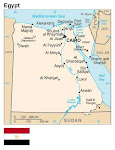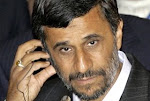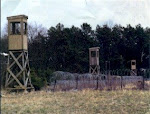 On Saturday, Israel began its much-anticipated ground offensive in Gaza amid a climate of uncertainty.By Sunday afternoon, less than 24 hours into the invasion, there was evidence that the mission was succeeding.Two of Israel’s intelligence chiefs gave upbeat assessments of the general situation.Amos Yadlin, the head of Israel’s military intelligence, said that “Hundreds of terrorists have been killed and weapons and ammunition stocks have been destroyed.” Moreover, according to Yadlin, “the Hamas government isn’t functioning.”Yuval Diskin, the head of the General Security Service, was also upbeat. He told the Israeli cabinet that Hamas was nearing the point of suing for a ceasefire as a result of Israel’s military pressure. “A real threat exists today against the Hamas enterprise in the Gaza Strip,”Diskin said.“The Hamas leaderships in Gaza and abroad feel an existential threat.”There’s no question that Israel’s war effort so far looks much better than the one against Hezbollah in the summer of 2006. The one-week bombing campaign that preceded this weekend’s ground invasion was carried out without grandiose claims that Hamas had been smashed. It was well-calibrated, effective, and diverse, targeting everything from smuggling tunnels and munitions stocks, to government buildings and top Hamas leaders.Israel has also benefited from much-improved military leadership. In 2006, then-Defense Minister Amir Peretz-a small-time, far-Left union boss-proved grossly inadequate to the task of directing Israel’s armed forces. At the military helm this time is Peretz’s far more suitable replacement, Defense Minister Ehud Barak. A decorated soldier, Barak now has a chance to atone for the severe blunders he made as prime minister back in 1999-2001, when he unwisely ordered the withdrawal from Lebanon and then involved Israel in the destined-to-fail summit with Yasir Arafat at Camp David.The early successes of Israel’s current offensive are a testament to its new and improved military strategy and leadership. For instance, the ground invasion began with impressive coordination between infantry, artillery, tank, air, and naval forces, reflecting careful planning and solid intelligence on the crowded, difficult Gazan terrain.By Sunday evening IDF forces had cut off northern Gaza from the south. Israeli naval craft had also reportedly brought forces to the strategic Philadelphia Corridor between Gaza and Sinai, where Israeli warplanes have already destroyed dozens of smuggling tunnels but many still remain.
On Saturday, Israel began its much-anticipated ground offensive in Gaza amid a climate of uncertainty.By Sunday afternoon, less than 24 hours into the invasion, there was evidence that the mission was succeeding.Two of Israel’s intelligence chiefs gave upbeat assessments of the general situation.Amos Yadlin, the head of Israel’s military intelligence, said that “Hundreds of terrorists have been killed and weapons and ammunition stocks have been destroyed.” Moreover, according to Yadlin, “the Hamas government isn’t functioning.”Yuval Diskin, the head of the General Security Service, was also upbeat. He told the Israeli cabinet that Hamas was nearing the point of suing for a ceasefire as a result of Israel’s military pressure. “A real threat exists today against the Hamas enterprise in the Gaza Strip,”Diskin said.“The Hamas leaderships in Gaza and abroad feel an existential threat.”There’s no question that Israel’s war effort so far looks much better than the one against Hezbollah in the summer of 2006. The one-week bombing campaign that preceded this weekend’s ground invasion was carried out without grandiose claims that Hamas had been smashed. It was well-calibrated, effective, and diverse, targeting everything from smuggling tunnels and munitions stocks, to government buildings and top Hamas leaders.Israel has also benefited from much-improved military leadership. In 2006, then-Defense Minister Amir Peretz-a small-time, far-Left union boss-proved grossly inadequate to the task of directing Israel’s armed forces. At the military helm this time is Peretz’s far more suitable replacement, Defense Minister Ehud Barak. A decorated soldier, Barak now has a chance to atone for the severe blunders he made as prime minister back in 1999-2001, when he unwisely ordered the withdrawal from Lebanon and then involved Israel in the destined-to-fail summit with Yasir Arafat at Camp David.The early successes of Israel’s current offensive are a testament to its new and improved military strategy and leadership. For instance, the ground invasion began with impressive coordination between infantry, artillery, tank, air, and naval forces, reflecting careful planning and solid intelligence on the crowded, difficult Gazan terrain.By Sunday evening IDF forces had cut off northern Gaza from the south. Israeli naval craft had also reportedly brought forces to the strategic Philadelphia Corridor between Gaza and Sinai, where Israeli warplanes have already destroyed dozens of smuggling tunnels but many still remain.P. David Hornik is a freelance writer and translator living in Tel Aviv. He blogs at http://pdavidhornik.typepad.com/.
http://www.frontpagemag.com/Articles/Read.aspx?GUID=339B005F-07CD-4CD8-A539-1567D1AFE207
As in the days of Noah....






















































































.bmp)

























.bmp)